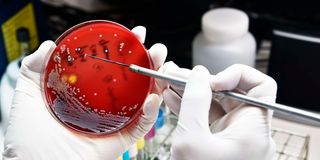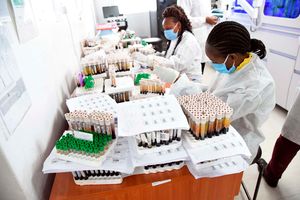Scientists discover new antibiotic that can eliminate killer bacteria

Scientists have developed a new antibiotic that is offering hope to patients infected by deadly bacteria.
A new antibiotic developed by scientists is offering renewed hope to patients infected by deadly bacteria that have in the past been evasive to all available drugs.
The scientists from Harvard University and a Swiss-based pharmaceutical company, Roche, discovered a new way of targeting the multi-drug resistant pathogen.
The bacterium, Acinetobacter baumannii, was in 2017 listed by the World Health Organisation (WHO) as the top most critical pathogen that needed an urgent new antibiotic to wipe it out from people’s bodies once they get an infection caused by it.
There are about three critical bacteria on the WHO priority list, inclusive of Acinetobacter baumannii. The WHO says that such pathogens are mostly found in hospital settings and, should one get infected, they are likely to get life-threatening pneumonia and other bloodstream infections.
The researchers published their findings in the scientific journal Nature, indicating that the death rate of patients infected with Acinetobacter baumannii is about 40 per cent to 60 per cent.
The scientists explain that a compound in the drug, called zosurabalpin, fights the pathogen by disrupting the route of a key toxin, which creates a form of wall that fights the bacteria using the immune system.
“It prevents the bacterium from properly constructing its protective membrane,” explains Roche, the drug manufacturer, in a statement. “The new molecule will help uncover new biology about the construction of bacterial membranes. However, the ultimate goal is to develop a potential new medicine that will effectively kill what was once an uncommon bacterium and is now one of the biggest infectious disease challenges to public health,” Roche added.
Positive result
Zosurabalpin was tested in mice, with the positive result giving the nod for the drug to be tested on human beings.
Scientists introduced the drug resistant pathogens to the mice, which resulted in pneumonia, but after using the drug compound, they discovered that the bacteria levels went down and the mice did not die from the bacteria-related complications.
At the moment, there is no single antibiotic, especially those that can target the drug-resistant pathogens, that has been approved by drug regulators in about 50 years.
In a statement published by Roche, Dr Michael Lobritz, the global head of infectious diseases at Roche Pharma Research and Early Development in Basel Switzerland, said that new antibiotics directed against the world's highest priority bacteria, like Acinetobacter baumannii, require novel development paths.
“Importantly, regulatory guidelines facilitate this, allowing us to use highly translatable animal model data to complement leaner clinical trials in support of registration,” said Dr Lobritz.
“This is the first time we’ve found anything that operates in this way, so it is unique in its chemical makeup and mechanism of action,” he told The Guardian.
A study published in 2022 showed that deaths linked to antimicrobial resistance were about 1.27 million in 2019, with Africa recording the highest number of deaths (about 27 in 100 people).
The Lancet listed six pathogens including Acinetobacter baumannii, which were the leading bacteria contributing to antimicrobial resistance in the world.
The Lancet advised that countries should prevent infections using available forms of vaccines so as to reduce the need for antibiotics in the first place.
It also advised people to stay away from antibiotics when they don’t need them, especially when treating viral infections because they don’t need them for a virus.





